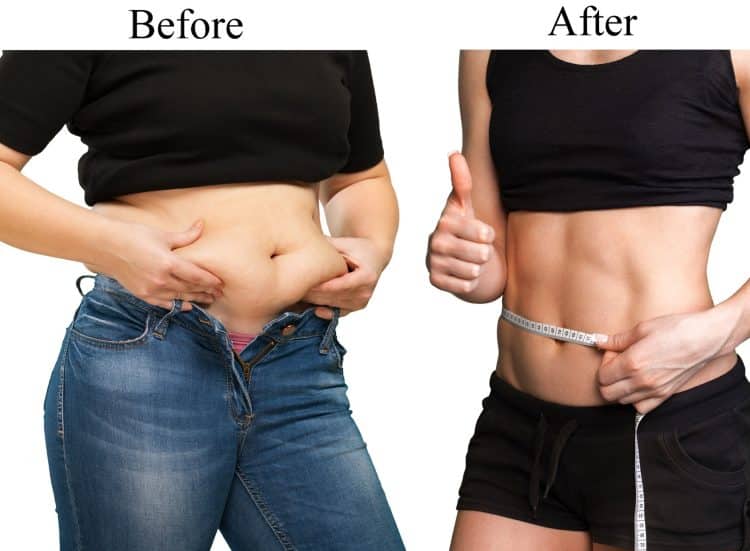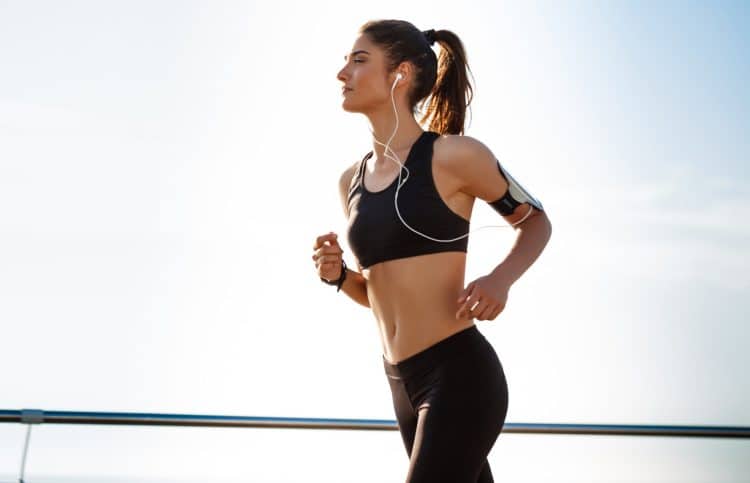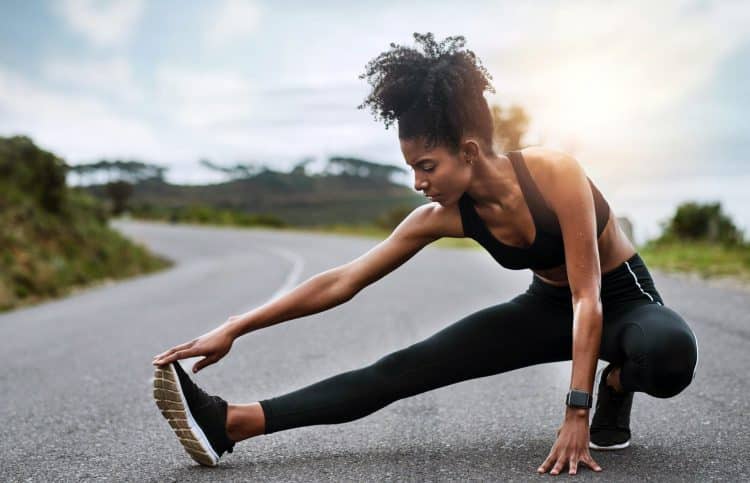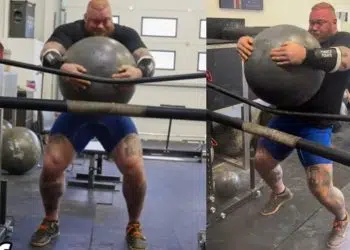Running can be a daunting prospect for many of us. The very thought of pounding the pavement for mile after endless mile is enough to get us running in the opposite direction. That said, while five, ten, or more miles may be beyond our ability, most of us can handle two miles a day.
Getting into the habit of running two miles a day will provide you with a whole host of benefits. It will help you lose weight, improve cardiovascular fitness, and increase muscular endurance.
As a personal trainer, I’ve introduced many of my clients to the benefits of running by easing them into a two-mile-per-day routine. Some began by alternating walking and running every 400 yards as they built their cardio fitness.
In this article, I’ll discuss why and how you should add a two-mile daily run into your schedule.
Benefits of Running 2 Miles a Day
Here are the advantages of running two miles daily:
Weight Loss
Running two miles will burn between 160 and 300 calories, depending on gender, speed, and weight. A 125-pound female running 5 miles per hour will burn around 160 calories. A 200-pound person running 6 miles per hour will likely use up approximately 300 calories.
Level Up Your Fitness: Join our 💪 strong community in Fitness Volt Newsletter. Get daily inspiration, expert-backed workouts, nutrition tips, the latest in strength sports, and the support you need to reach your goals. Subscribe for free!
Combining the two-mile daily run habit with a reduced-calorie diet built around healthy choices will help you lose around a pound of fat per week. Work out your basal metabolic rate (BMR) and reduce that by 250-500 calories daily. Your BMR is the number of calories your body needs to meet its energy needs for the day.
Go here to calculate your BMR.
Improved Cardiovascular Health
Running just two miles per day will steadily improve your cardiovascular fitness. It will help to lower your blood pressure, reduce LDL (bad) cholesterol, make your heart a stronger, more efficient pump, and improve your lung’s capacity to process oxygen. As a result, your risk of heart disease and related cardiovascular illness will be reduced.
Blood circulation around your body will be enhanced due to running two miles a day. That means transporting oxygen and nutrients to your body’s cells will be more efficient, resulting in more energy.
Mood Improvement
Running every day will make you a happier person. Your daily run will release endorphins in the brain that improve your mood.
These feel-good chemicals bring on what is known as the ‘runner’s high.’ They help to overcome stress and anxiety, promoting a feeling of connectedness with your body and an overall sense of euphoria.
Running is also known to increase serotonin levels. Serotonin is a neurotransmitter that helps to regulate emotions. The more serotonin you have circulating in your body, the more your mood will improve.
Enhanced Productivity
Getting into the two-mile daily running habit will make you a more productive person. Running at a moderate pace is a very mindful activity. It allows you to clear your mind to better focus on the tasks ahead of you.
In addition, running for a couple of miles reduces fatigue and stress. As a result, you will have more to give to your daily tasks. The dopamine rush you experience after a run will also help you stay energized and motivated in the hours after your run.
If you can, schedule your daily run early in the morning. By doing so, you’ll set yourself up for a great day.
How To Get Started
As a beginner, you should stick to a structured running program. This will ensure that you make incremental progress without over or under-training.
Having a running schedule for the week is also very encouraging and motivating. As you tick off each session, you’ll have a visual reminder of the cumulative effect of your training sessions.
A good habit to get into is logging your runs. You can do this on paper, your computer, or your smartphone. Write down the details of your run, how you felt, how far you went, and how long you went for.
In addition to your running program, you should cross-train. This simply means doing any other form of fitness that isn’t running. This may be playing tennis, cycling, or lifting weights. It is vital, however, that you pace yourself very well. You do not want to overdo it and end up burned out.
The hardest part about going for a run is getting out the door. Recruit the support of the people you live with to give that extra push to get you over the door stoop. Tell them to be ruthless.
When you start running, you should begin very slowly. When you start, you can expect that you won’t be able to go very far. In fact, you shouldn’t even try to. If you do, you are putting yourself at risk of injury.
If you are unable to run two miles, begin by walking. You might only be able to walk for half a mile at the start. Gradually build up until you can walk the entire two miles. Then, set the goal of alternating walking and running every 400 yards. Gradual progression will get you to two miles running at a moderate pace.
Running Attire
There is no special requirement for what you need to wear for your two-mile run. Just make sure you wear clothing that allows freedom of movement, that your skin can breathe, and that provides adequate protection against the sun.
Take your pulse once per week during your running program. This will allow you to monitor your cardiovascular fitness. As you become fitter, your heart can pump more blood around your body with each heartbeat. This will result in a lower heartbeat.
Be sure to take your pulse at the same time of day and under the same conditions. It is good to check it on a Monday morning just after waking before you are out of bed. As the weeks pass, you will see a constant lowering of your pulse rate.
Warming Up
Level Up Your Fitness: Join our 💪 strong community in Fitness Volt Newsletter. Get daily inspiration, expert-backed workouts, nutrition tips, the latest in strength sports, and the support you need to reach your goals. Subscribe for free!
You must warm up before you start running. There are three critical reasons for this:
- It guards against injury.
- Warming up prepares your body for the demands of the session to come.
- It allows you to run more efficiently.
Your warm-up should be for a minimum of five minutes. Start your warm-up with some brisk walking. After three minutes, raise the heart rate slightly with a gentle jog for 30 seconds.
Now that your cardiovascular system is warmed, it is time to move your muscles with dynamic stretching.
5 Dynamic Warmup Stretches
Here are five dynamic stretches you must perform before a run:
Windmill Swing
Focus: Shoulders
- Stand with your arms by your sides and your feet shoulder-width apart.
- Bend slightly forward at the hips and bring arms out to shoulder level.
- Swing your arms windmill fashion with your elbows locked from right to left and back again.
- Perform 10 windmill swings.
Vertical Arm Swings
Focus: Chest
- Stand with your arms extended out in front of you with elbows locked.
- Bring the arms to the sides until they are perpendicular to your torso.
- Return to the start position.
- Do 10 reps, focusing on contracting and extending the pecs and lats.
Twists
Focus: Core
- Stand with your arms extended in front of you.
- Twist your torso to the right as you bring your arms to that side and bring the outside heel off the floor. Focus on the movement of the intercostals at the side of your waist.
- Do five twists to each side.
Pelvic Circles
Focus: Pelvis
- Stand with your hands on hips and feet shoulder-width apart.
- Perform exaggerated circles with the hips. Keep your legs straight throughout this movement.
- Perform five circles in each direction.
Air Squats
Focus: Thighs and Glutes
- Stand with your arms directly out in front of you and your feet shoulder-width apart.
- Hinge at the hips to lower into a full squat. Maintain a natural back arch with your shoulders pulled back.
- Push through your heels to return to the start position.
- Lower yourself into a full squat with your arms directly out in front of you and your back arched. Look up throughout this movement.
You are now ready to run.
Cooling Down
Cooling down after each run is essential. It safely returns your heart rate, blood pressure, and temperature to your pre-exercise condition. It also helps flush out the waste by-products of your exercise session. In addition, it helps to alleviate post-run soreness.
After your workout, gradually decrease your pace from running to jogging and then to a gentle walk. Once you’ve slowed down, drink some water. You should now do some static leg stretches. These include:
Quad Stretch
Stand with your feet shoulder-width apart. Bend your right leg and, holding the front of your foot, pull your foot up towards your glutes. You can lean on a chair or wall for support. Hold for 30 seconds, then repeat with the other leg.
Calf Stretch
Lean against a wall or other support in a staggered stance with your left leg in front. With your toes pointing ahead, slightly bend your right knee, keeping your left knee straight and your heels on the floor. Hold for 30 seconds, then repeat with the other leg.
Standing Hamstring Stretch
While standing, raise your right leg and place the heel on a rail or bench. Lean forward, keeping your back and legs straight. Hold for 30 seconds, then repeat with the other leg.
Standing Glute Stretch
Stand with your feet shoulder-width apart and hands on your hips. Cross your right ankle over your left knee. Bend at the hips to bring your torso to a 45-degree angle. Hold the stretch for 10 seconds, and repeat with the other leg. Do five reps on each leg.
Proper Running Form
Running is a skill, and learning the proper technique will allow you to do it more efficiently. That means you’ll exert less energy when you run, making the whole process easier. Learning to run properly will also eliminate the risk of strain and injury.
Good runners run tall; they are upright rather than stooped when they run. They have a slight forward lean. Their arms are bent at 90 degrees and pump naturally with the leg movement.
Running has two main phases: floating and stance. Floating occurs when both feet are off the ground. The stance phase can be divided into toe-off, swing, strike, and support. Let’s consider these phases one at a time:
Toe Off
To initiate movement, the leading leg’s knee drives forward while the trailing foot leaves the ground. The power of this movement comes from the Achilles tendon and calf muscles. During this phase, new runners tend to lean too far forward. This has a negative effect on their stride angle. By leaning from the ankle rather than the hip, you will enable a wider stride angle when driving the knee at toe-off.
Swing
This is the longest phase of the running motion. Your legs are moving forward through the air, swinging through in preparation for the next foot strike. The hip flexors pull the trailing leg through, and the hamstrings slow the leading leg in anticipation of it striking the ground. Be sure to allow your trailing leg to cycle through naturally and that the arms are bent at right angles and rotating from the shoulders. This arm movement will help to set your running pace.
Strike
The body absorbs several times its weight as it strikes the ground. To lessen the impact, ensure your front foot is slightly in front of your body. The landing foot should also be relatively flat as it comes down.
There is much debate over what constitutes the ideal foot strike. Some runners prefer a mid-foot strike simultaneously on the ball of the foot and heel. This transmits the impact force evenly up the leg. Others go with a heel strike, landing first with the outside of the heel, then rolling inward to load the arch. A forefoot strike is typically used by speed runners, with the landing on the ball of the foot on the outside edge. Whichever strike you go with, be sure to avoid a heavy landing.
Support
This is the mid-stance, just after the strike. The leading leg is directly under the hips. The body travels over the leg in preparation for the next toe-off. The leading foot arch flattens against the ground as it stores energy in readiness for the next cycle to begin.
Breathing
An efficient breathing pattern will ensure you’re not out of breath while running. On the other hand, you need to take in enough oxygen to sustain your energy output. To achieve this, breathe as generally as possible, with deep breaths in and controlled breaths out. Stay upright so as not to constrict the lungs and stay relaxed.
Running Technique Summary
- Run upright with the angle originating from the ankle, not the hips.
- Keep your head up.
- Keep your core tight and your shoulders down.
- Your midfoot should contact the ground first (the neutral strike).
- Your arms should be moving freely at your sides.
Conclusion
Running two miles per day is an achievable goal for most people. Running two miles at a moderate pace of about 4 mph will take about half an hour. It can also result in various health benefits, from weight loss to greater heart and lung capacity.
Combining a two-mile daily run with strength training will benefit you even more. A 2016 study showed that a regular strength training program improved running economy and endurance in trained runners. [1]
Go here for a 12-week bodyweight training plan to complement your new two-mile daily running habit.
References
- Balsalobre-Fernández, Carlos1; Santos-Concejero, Jordan2; Grivas, Gerasimos V.3. Effects of Strength Training on Running Economy in Highly Trained Runners: A Systematic Review With Meta-Analysis of Controlled Trials. Journal of Strength and Conditioning Research 30(8):p 2361-2368, August 2016. | DOI: 10.1519/JSC.0000000000001316
Article Updates Timeline:
Our editorial team experts constantly update the articles with new information & research, ensuring you always have access to the latest and most reliable information.
January 1, 2024
Written By
Steve Theunissen, PT
Copy Edited By
Vidur Saini
Fact Checked By
Dr. Malik














